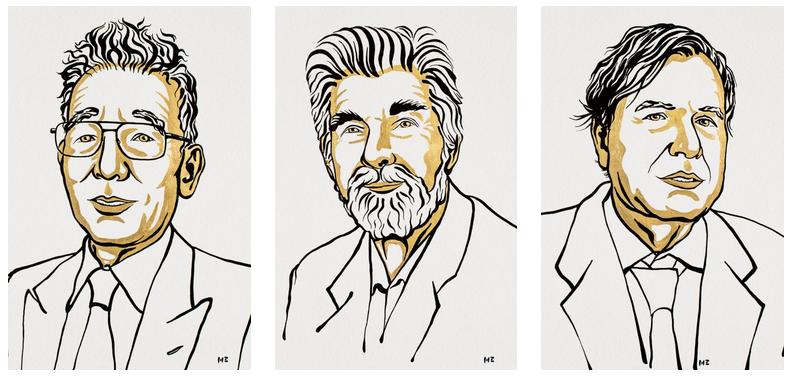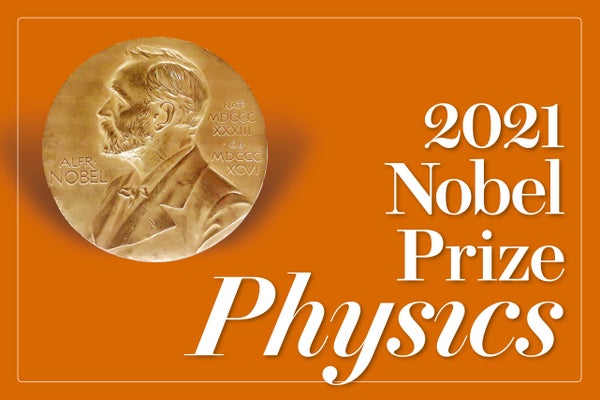Just weeks before the latest round of international talks seeking solutions for our rapidly warming world, this year’s Nobel Prize in Physics highlights some of the fundamental science at the heart of Earth’s climate emergency. It was awarded for work that clarified how complex, disordered systems—such as a planet’s climate—respond to disturbances.
Syukuro Manabe of Princeton University and Klaus Hasselmann of the Max Planck Institute for Meteorology in Hamburg shared half of the 2021 prize, for their separate work to understand the physical basis of climate change. The other half was awarded to Giorgio Parisi of Sapienza University in Rome, for his work studying spin glasses—magnetic materials that are in a constant “metastable” state, balanced between chaos and order.

The Nobel Prize in Physics 2021 was awarded “for groundbreaking contributions to our understanding of complex systems” with one half jointly to Syukuro Manabe and Klaus Hasselmann “for the physical modelling of Earth’s climate, quantifying variability and reliably predicting global warming” and the other half to Giorgio Parisi “for the discovery of the interplay of disorder and fluctuations in physical systems from atomic to planetary scales.” Credit: Niklas Elmehed © Nobel Prize Outreach
On supporting science journalism
If you're enjoying this article, consider supporting our award-winning journalism by subscribing. By purchasing a subscription you are helping to ensure the future of impactful stories about the discoveries and ideas shaping our world today.
In the 1960s, Manabe’s work led to the first reliable prediction of how our planet’s average temperature rises in response to increasing amounts of atmospheric carbon dioxide. About a decade later, Hasselmann discovered and characterized systematic, statistical linkages between the chaotic day-to-day variations of Earth’s weather and slower fluctuations of the planet’s climate. Together these efforts laid the foundation for robust quantitative studies of climate change. Beginning in the 1970s, Parisi’s studies of mysterious patterns arising in spin glasses led to breakthroughs in the scientific understanding of disorder and chaos in physical systems, from atomic to planetary scales.
“Many of you might believe that physics is only about simple and orderly phenomena,” said Göran Hansson, secretary general of the Royal Swedish Academy of Sciences. “But physics is much more than this,” because it uses basic theories to explain the world’s vast complexities. “These studies require deep intuition into what structures and progressions are essential…. Things at which this year’s laureates are true masters.”
“In a [piece of] glass…it is not clear where particles will reside. Giorgio Parisi tamed this frustration, this complicated landscape, by building a deep physical and mathematical model that is so broad it has impacted a vast range of fields far beyond spin glasses,” said John Wettlaufer, a theoretical physicist from Yale University and member of the Nobel Committee of Physics, during the ceremony.
“Parisi’s work has demonstrated that physics can be used to describe processes on all scales,” says Sabine Hossenfelder, a theoretical physicist from the Frankfurt Institute for Advanced Studies. “Indeed, it is often the scale-dependence itself that is most useful to describe the properties of systems.”
“This is really exciting news—Suki Manabe invented modern climate-change modeling,” says Peter Cox, a climate scientist at the University of Exeter. “And amongst many other things, Klaus Hasselmann developed the concept of ‘optimal fingerprinting’ that allows us to be so sure that recent climate change is due to humans.” That latter technique involves comparing between models and observations to quantify the effects of specific inputs—such as anthropogenic greenhouse-gas emissions—upon the Earth’s climate.
Asked about the connection between his work and that of his fellow laureates, Parisi noted that his studies of disorder in complex systems had been used to model the roughly 100,000-year cycles of glaciation that produce Earth’s ice ages. Time is running out, he said, to address our planet’s ominously rising temperatures. “It’s clear that for future generations we have to act now, in a very fast way.”
